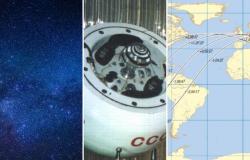He Universe It has 13.8 billion years of birth. That is the theoretical conclusion to which hundreds of scientists who have investigated the origin of existence have reached. However, there is no specific element to determine the exact date on which the explosion of the Big Bang.
Read more about science and space: [La Súper Tierra que habían encontrado astrónomos británicos, antes del reciente hallazgo del planeta K2-18b]
All this could change overnight in the future not so distant. A team of experiment scientists ATLASin it Great Hadron Colliding (LHC) in Switzerlandhas managed to observe for the first time pairs of quarks top in collisions between protons and lead nuclei, the site reviews Andro4All.
Although it sounds like something taken from a science fiction laboratory, this finding brings us a little more to understand how and when the Universe.
To put it in perspective and we can understand the complex concepts of the investigation: quarks are tiny particles that form things like protons and neutrons.
The Quark Top is the heaviest and one of the most mysterious. It disintegrates almost immediately after forming, which allows you to study it before it “mixes” with other particles. That makes it a kind of time capsule that shows us what matter was like in the first moments after the Big Bang.
These proton-plates generate temperatures and conditions similar to those of the primitive universe. The fact that Quarks Top has occurred in this extreme environment offers a unique opportunity: Analyze how matter behaves when it is on the verge of disintegrating or forming, as happened 13.8 billion years ago.
Until now, the Quark Top had been observed in more “simple” collisions, such as proton against proton. Detect it in proton-block collisions is a milestone Because it allows to study how a dense and loaded nucleones influence the creation of these exotic particles.
This advance also helps to refine the models that explain the internal structure of the atoms and how their components are distributed, something fundamental to understand both particle physics and the evolution of the cosmos.






